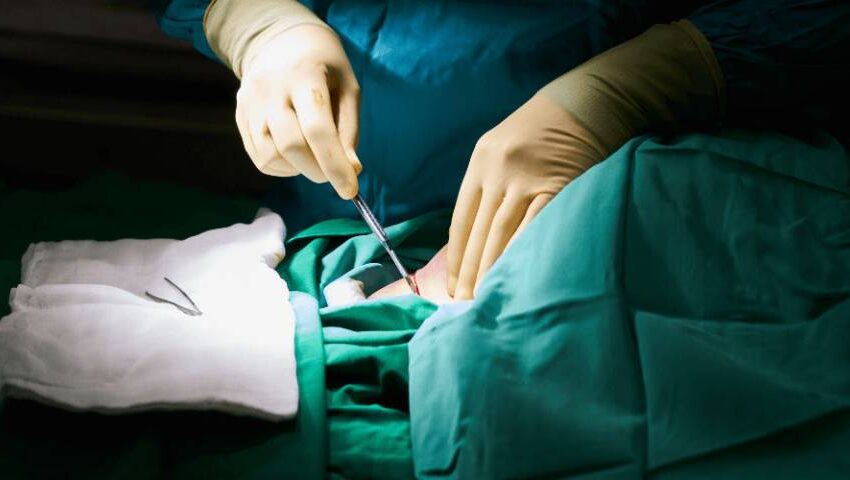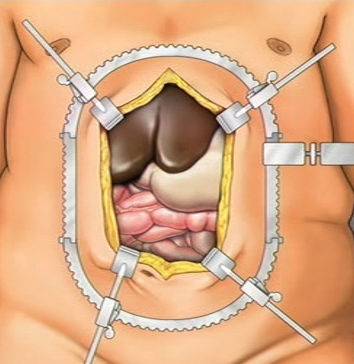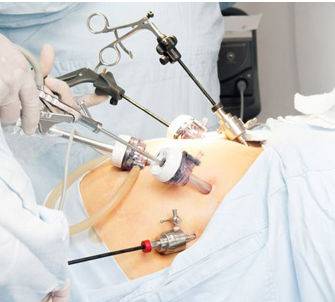
- 22/03/2021
- Dr. Samrat Jankar
- 0 Comments
- Blog
Laparoscopic Surgery Vs. Open Surgery
Nowadays, the majority of people suffer from abdominal or pelvis diseases. Identifying and treating these abdominal problems often require a surgical procedure, either Laparoscopic or Open surgery.
But most patients with abdominal problems visiting our clinic in Pune ask, which one should we choose? Laparoscopic or open surgery, and Why?
So, let’s take a deeper dive and discover which one is best suitable for you.
What Is An Open Surgery?
Advantages of Open Surgery
- Open surgery enables surgeons to access the internal abdominal areas more clearly and efficiently.
- In conditions requiring insertion of stuff like mesh for a hernia, the surgeons recommend open surgery.
- Open surgery guarantees that no other body tissues are harmed.
- Some procedures like an umbilical hernia and femoral hernia are treated by open surgery only.

What is Laparoscopic Surgery?
Laparoscopy is also termed as minimally invasive surgery, keyhole surgery, diagnostic laparoscopy, and Band-Aid surgery. Laparoscopic surgery helps in diagnosing and treating conditions of the abdomen or pelvic region.
It is usually initiated by small incisions. Hence, it is less painful as compared to other surgeries. Key elements used in laparoscopic procedures are a laparoscope, a long, thin tube assembled with a high-resolution camera used to examine the abdominal organs.
The surgeon places the instrument through the incision, and the camera transmits images to a video monitor as it goes along.
Some of the Conditions Treated by Laparoscopy
- Hernias: When an organ passes through an opening in the muscle or tissue that keeps it in place, it is called a hernia. A hernia mainly occurs in the abdomen. But it may also happen in the belly button, upper thigh, or groin areas. Most hernias aren’t life-threatening. But they need surgery to prevent potentially dangerous complications. Laparoscopy is one of the standard methods used to remove it.
- Appendicitis: Appendicitis is inflammation of the appendix. Males are more likely to acquire it than females. If left untreated, it causes the appendix to burst, and the infection could spread to the nearby organs. This condition can be severe and sometimes fatal.
- Cholecystitis: Cholecystitis is a disease in which the gallbladder, an organ that aids in fat digestion, becomes inflamed. If the inflammation persists for longer or you have repeated symptoms, this condition may become chronic.
Some of the other GI laparoscopic surgeries include bariatric surgery, colorectal surgery, HPB surgery, etc.
Advantages of Laparoscopy
- Laparoscopy ensures that there is less discharge of blood.
- During laparoscopy, surgeons typically make four small 1.5 to 2.0 cm incisions to begin the operation. Because of the minor incisions, there should be no discomfort during the procedure.
- The patient acquires faster recovery, and there are fewer cut marks on the abdomen after surgery.
- Risks of infections in laparoscopy are minimal as internal organs are not exposed to the external environment.
- In laparoscopy, less analgesia is required. Thus, no risk of side-effects from analgesia.

Which is the Best, Laparoscopy or Open surgery?
- Open surgeries are the most common form of surgery. In contrast, laparoscopy is a more sophisticated procedure.
- Compared to open surgery, laparoscopy utilizes more advanced techniques. As a consequence, many people prefer laparoscopy over open surgery.
- Laparoscopy is the way to go if you want the best treatment with the least amount of pain and cuts on your body, particularly for procedures in the abdominal or pelvic regions. The recovery time for open surgeries is longer than for laparoscopic surgeries.
- If you believe that laparoscopy is costly, you are wrong because it is affordable. Nowadays, most of the Laparoscopic surgeons in Pune provide it at inexpensive costs. However, your doctor may prefer an open surgery, which is entirely reasonable depending upon your medical condition.
